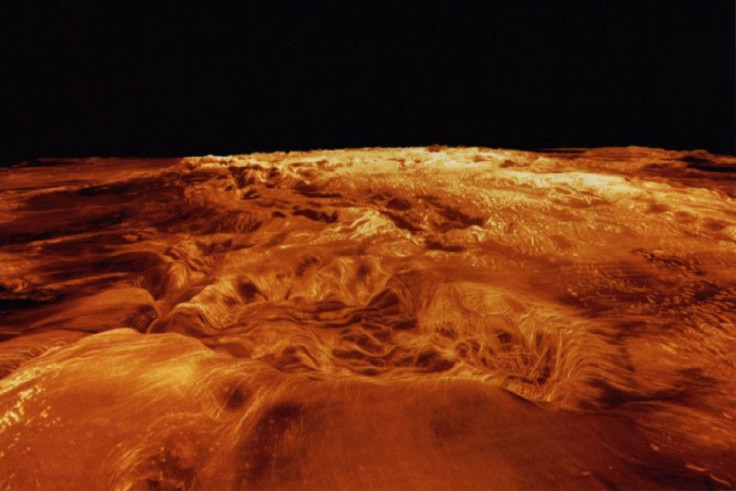Active Volcanoes Exist On Venus, New Study Claims

KEY POINTS
- A new study claims active volcanoes exist on Venus
- Researchers discovered evidence of fresh lava on Venus
- Studying Venus can provide important information on other planets
The planet Venus is apparently home to active volcanoes, a team of researchers has claimed. If their findings are true, then Venus could be the only planet in the Solar System other than Earth to have recent volcanic activity.
The new study was published in the online journal Science Advances. It was conducted by researchers from the Universities Space Research Association (USRA).
Traces of volcanic activity have already been discovered on Venus. Back in the 1990s, it was revealed that the planet had extensive networks of lava flows through the data collected by NASA’s Magellan spacecraft.
Then, during the 2000s, the planet’s volcanic activity was measured by the Venus Express orbiter deployed by the European Space Agency.
However, despite the abundance of data collected by various space agencies on Venus, it wasn’t clear if the planet has active volcanoes on its surface. For one, the various space missions were not able to determine if the lava flowing on the planet was fresh or not.
Through an experiment, USRA researchers were able to recreate Venus’ atmospheric conditions inside a laboratory, which allowed them to observe how minerals within lava flow interact with them over time. They discovered that within a matter of weeks, a mineral known as olivine reacts rapidly to the atmosphere. The reaction causes it to be covered in iron oxide minerals hematite and magnetite.
Using the data they have gathered from their experiment, the researchers concluded that the lava flowing on Venus is still fresh, which strongly suggests that it came from an active volcano on the planet.
For the study’s lead author Justin Filiberto, studying Venus’ active volcanism can shed new light on the conditions of other planets.
“If Venus is indeed active today, it would make a great place to visit to better understand the interiors of planets,” Filiberto explained in a statement. “For example, we could study how planets cool and why the Earth and Venus have active volcanism, but Mars does not. Future missions should be able to see these flows and changes in the surface and provide concrete evidence of its activity.”
© Copyright IBTimes 2024. All rights reserved.





















